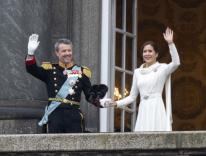http://ncronline.org/blogs/distinctly-catholic/chaputs-latestMichael Sean Winters has a column at the NCReporter on a recent talk by Archbishop Chaput for which he has some words of praise and some of criticism. Among the latter are these two points:Finally, you would not know from Chaputs argument that Vatican IIs Decree on Religious Liberty raises as many questions as it answers and that the tension between the negative conception of liberty (freedom from) that was at the heart of the American founding, and the positive conception of freedom that is the only kind Catholic anthropology can truly embrace, remains unresolved.Put differently, Chaput may like to cite Courtney Murray, but I would submit that when Courtney Murray argued that the Bill of Rights were articles of peace, not articles of truth, he was making the kind of assertion that would earn a frown from Pope Benedict XVI.I am hoping that he, or someone else, might like to explicate these rather cryptic comments. With regard to the first claim, I simply note that the Councils Declaration on Religious Freedom defined religious freedom negatively as immunity from coercion in religious matters, the right not to be coerced to act against ones beliefs or to be prevented from acting on them. I do not see why this should be thought to be in tension with a positive notion of freedom which in fact the Council left undeveloped.With regard to the second question, I note that what Murray wrote was that they were not articles of faith, but articles of peace; but I dont think this would greatly affect Michaels claim. I would be interested to know why it is thought that the present Pope would frown at it.Michael Sean Winters has a column at the NCReporter on a recent talk by Archbishop Chaput for which he has some words of praise and some of criticism. Among the latter are these two points:
Finally, you would not know from Chaputs argument that Vatican IIs Decree on Religious Liberty raises as many questions as it answers and that the tension between the negative conception of liberty (freedom from) that was at the heart of the American founding, and the positive conception of freedom that is the only kind Catholic anthropology can truly embrace, remains unresolved.Put differently, Chaput may like to cite Courtney Murray, but I would submit that when Courtney Murray argued that the Bill of Rights were articles of peace, not articles of truth, he was making the kind of assertion that would earn a frown from Pope Benedict XVI.
I am hoping that Michael, or someone else, might like to explicate these rather cryptic comments. With regard to the first claim, I simply note that the Councils Declaration on Religious Freedom defined religious freedom negatively as immunity from coercion in religious matters, the right not to be coerced to act against ones beliefs or to be prevented from acting on them (DH 2). I do not see why this should be thought to be in tension with a positive notion of freedom, which in fact the Council left undeveloped.With regard to the second question, I note that what Murray wrote was that they were not articles of faith, but articles of peace; but I dont think this would greatly affect Michaels claim. I would be interested to know why it is thought that the present Pope would frown at it.
Please email comments to [email protected] and join the conversation on our Facebook page.
Share
Previous Story
We Think We're Sweden
Next Story
What's Our Favorite Deadly Sin?

